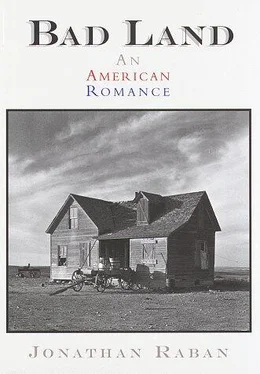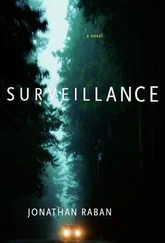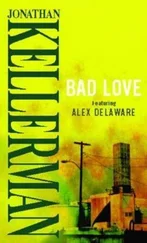Some of the best land open to homestead entry may be found near the towns of Baker, Mildred, Terry and Ismay. Here are great stretches of level bench lands suitable for farming. The soil possesses extraordinary fertility.
The dictionary was needed for “bench lands.” Any conformation of earth, stone, etc. which has a raised and flat surface . One imagined something like the Kentish Weald, an hour south of London on the train from Waterloo.
The book explained exactly how to get a homestead. When you arrived at your chosen town, you would be well advised to go to a professional “locator.” For a $25 fee, the locator would find and stake for you a suitable half-section of unclaimed public land. You’d pay a filing fee ($22.00) to the U.S. Land Office, where your claim would be formally registered. Then you could set about building your farmhouse and fencing your 320-acre spread.
It was a dizzying thought.
This was not the Wild West. One wasn’t proposing to go out to some trackless frontier to wield a musket and wear a coonskin hat. This was twentieth-century farming country with regular train service and electric light.
The regional capital, Miles City, had a population of 5,000 and was said by the book to have “all modern conveniences.” “It is thoroughly up to date and wide awake.” Photographs of the town, which had started life as an army camp and then became a ranching center in the 1870s, showed wide boulevards lined with old trees and new telegraph poles. The grandest of the six hotels, the Leighton, looked as big as the Ritz. There were churches (Episcopalian, Methodist, Presbyterian, and a Greek-pillared Ursuline convent), handsome brick schools, a Carnegie library, an opera house, and a main street of shops under the shade of canvas awnings. Among the members of the Miles City Chamber of Commerce were listed nine attorneys, five physicians, three newspapers, two milliners, a music store and two osteopaths. In its austerely rectangular American fashion, its buildings set down like so many packing cases on a railway platform, Miles City looked as smart as paint.
Its private houses had an air of relaxed middle-class prosperity. Their room-sized balconies gave on to big leafy gardens. In one picture, a child in a sailor suit sat in a swing. In another, a group of ladies had put down a rug on the lawn and were taking a picnic tea. Looking at these photographs, hunting for clues in the shadows, made the distance to Montana abruptly shorten. The modern West, with its milliners and osteopaths, its garden swings and alfresco tea parties, was neither wild nor far. It was tantalizingly within reach, and success there was practically guaranteed.
Three hundred and twenty acres. The word “acre” was not in the everyday vocabulary of most readers, and from a rented flat or tenement room it was hard to get a handle on what 320 acres, half a square mile, actually meant. Some homework with a street map helped. In London, suppose one stood on the south side of Hyde Park by the Albert Memorial and looked north: all of the park that lay to one’s right would make a half-section. Rotten Row, with its parade of fashionables on horseback, would be in it. So would the entire length of the Serpentine and the Long Water. It would include Temple Lodge and the Peter Pan statue, the sloping woodlands round the tea house, and go all the way to Speaker’s Corner up in the far northeast of the park. The boundaries of the property would be marked by the hazy mansions of Park Lane and the wedding-cake stucco of Bayswater.
In such a space, one could imagine a dozen big fields, filled with rippling crops of wheat, oats, barley; ample pastureland for sheep and cattle to wander; a tree-shaded house, a red barn, a walled kitchen garden for vegetables. There would be poultry scratching in the yard … beehives in the clover … a winding gravel drive … It wouldn’t be a farm, it would be an estate.
The Milwaukee Road pamphlet recommended that serious home seekers who wanted to look carefully before they leaped should send off to Lincoln, Nebraska, for a book by Mr. Hardy W. Campbell, “the noted farming expert and inventor of the Campbell System of scientific farming for semi-arid lands.” Campbell’s Soil Culture Manual , price $2.50, cloth-bound in deep moss green, had a gilt camel stamped on its front cover. Across the camel’s legs trailed a banner that read: THE CAMEL FOR THE SAHARA DESERT — THE CAMPBELL METHOD FOR THE AMERICAN DESERT.
The book was famous. It carne out in several editions between 1902 and 1912, and in the houses of settlers already arrived rived in the West the Manual had a place in the narrow bookshelf alongside the Bible and Pilgrim’s Progress . In the first issue of Ismay’s own local paper, the Ismay , which appeared on May 20, 1908, when the outlines of the town were still being pegged out by the railroad company, there was a poem in Campbell’s honor:
THE DRY LAND HOMESTEADER
I’ve started to dry farm
A piece of bench land sod,
And if I meet no harm
I’ll win or bust — by jinks.
Plow and harrow and disc—
Disc and harrow and plow:
Of course there is some risk
Until a chap knows how.
Campbell says they will grow
If seeds are put in right—
Depends on how you sow
With ground in proper plight.
And so I work all day:
At night I read his book—
I get no time to play
And hardly time to cook.
For despite its no-nonsense, lackluster title, Campbell’s Soil Culture Manual was an inspirational work. Hardy Campbell was an evangelist in the cause of Science, Progress and the American Way. His prose brimmed with excitement at the dawning of the new age. “The natural trend of things in the opening decade indicates that the twentieth century is to mark an advancement in all material things that go to give comfort to mankind far in advance of the splendid record of the nineteenth or any previous century.” Like all revolutionary discoveries, his own method of scientific soil culture had met “ignorance, prejudice and the inertia of error”; and, like all true prophets, Campbell had suffered for his beliefs, stuck to his guns and, at last, been proved triumphantly right.
He had seen the future of the West, and projected it before his readers like a magic-lantern slide. “The semi-arid region is destined to be in a few years the richest portion of the United States.”
Looking far into the future one may see this region dotted with fine farms, with countless herds of blooded animals grazing, with school houses in every township, with branch lines of railroads, with electric interurban trolly lines running in a thousand directions, with telephone systems innumerable, with rural mail routes reaching to every door. It is coming just as sure as the coming of another century. The key has been found and the door to the riches has been unlocked.
Yet Campbell was not appealing merely to his readers’ cupidity. The riches he promised were a force for virtue.
As a great moral influence we shall claim for scientific soil culture a place in the front rank … There is nothing that will go so far toward changing the life of a man or a family to the better things as prosperity. Poverty is a demoralizing influence. Idleness is next of kin to sin. And idleness is closely associated with poor farming. Whatever tends to give the people more of the material comforts of life helps to raise them up. It is easier to be good when one has had a fine dinner … Better farming means better farm homes, happier farm families, better citizenship, more nearly the ideal simple life.
Like every other means of spiritual self-improvement, the Campbell method demanded that its adherents dedicate their lives to its pursuit. To be a good Campbellite, “the principles of scientific soil culture must be grounded deep within him. He must be saturated with the subject. It must become part of his being.” So the dry-land homesteader would turn these pages by candlelight, moving his lips to the words of an inspired text.
Читать дальше












